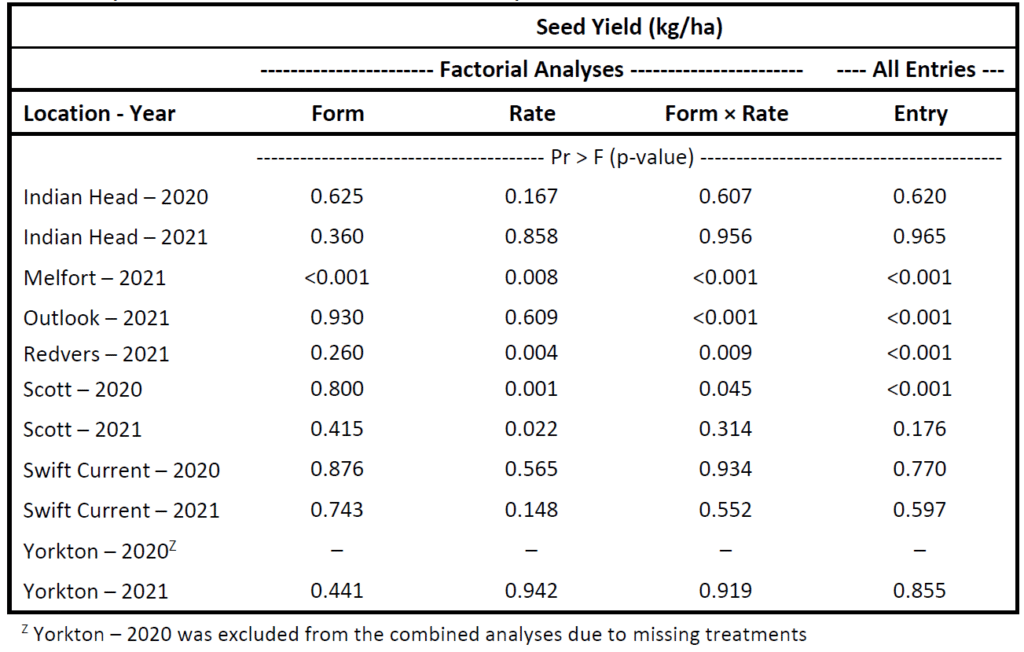Key Result
In conclusion, monoammonium phosphate (MAP) generally performed as well or better than the options to which it was compared. However, other forms may be advantageous from a logistic/handling perspective (i.e. S15) or with regard to seed safety and as such, may still be a good fit for individual operations.
Project Summary
With field trials at Swift Current, Scott, Indian Head, and Yorkton in 2020 and these four locations plus Melfort, Outlook, and Redvers in 2021, a project was conducted to demonstrate the effects of various seed-placed phosphorus fertilizer formulations on canola establishment and yield.
The formulations were monoammonium phosphate (MAP), MicroEssentials® S15, CrystalGreen® (CG), and a MAP:CG blend where 35% of the P2O5 came from CG. In addition to a control, the rates were 25, 45, and 65 kg P2O5/ha. All sites were reasonably low in residual phosphorus with less than 15 ppm 90% of the time. Response data included spring and fall plant densities, maturity, and yield; however, maturity effects were rarely significant and too small to be of agronomic importance.

Treatment effects on establishment occurred at approximately 50% of the sites. While the lack of response could sometimes be reasonably explained by soil properties and/or moisture conditions, it was more difficult to explain at others and confirms the unpredictable nature of seedling injury with in-furrow phosphorus fertilizer placement. Where they did occur and when averaged across sites, stand reductions were usually most severe with S15, followed closely by MAP and were less severe with the MAP:CG blend and essentially non-existent with 100% CG.
On average, yields increased up to the highest phosphorus rate and the responses were similar for all forms except CG applied on its own which performed slightly poorer. For individual sites, yield responses to phosphorus were significant less than half the time; however, yields for many sites were below average and phosphorus fertilization is also important from a long-term perspective when considering the poor uptake-efficiency in the year of application. From an economic perspective, all forms performed reasonably well except 100% GC due to its higher cost and weaker yield response. On average, the rates required to at least maintain phosphorus fertility over the long-term were also profitable.
In conclusion, MAP generally performed as well or better than the options to which it was compared; however, other forms may be advantageous from a logistic/handling perspective (i.e. S15) or with regard to seed safety (i.e. MAP:CG blends) and, as such, may still be a good fit for individual operations.
Funding acknowledgement
This project was supported by the Agricultural Demonstration of Practices and Technologies (ADOPT) initiative under the Canada-Saskatchewan Growing Forward 2 bilateral agreement. Additional funding was provided by Fertilizer Canada
Related research
For additional consideration, see the 2015 Indian Head Agricultural Research Foundation (IHARF) study Safe rates of side-banded and seed-placed phosphorus in canola.





